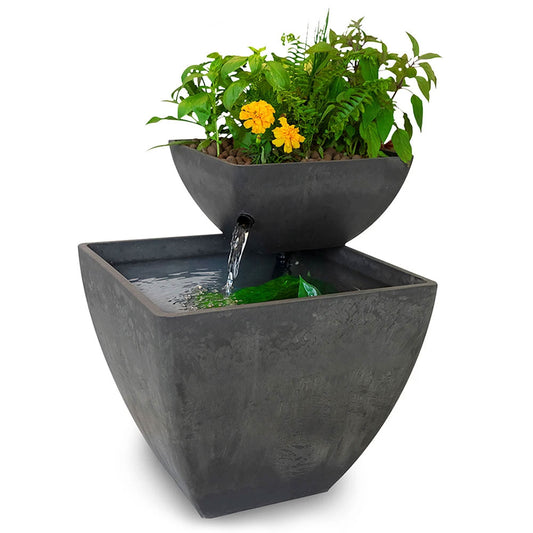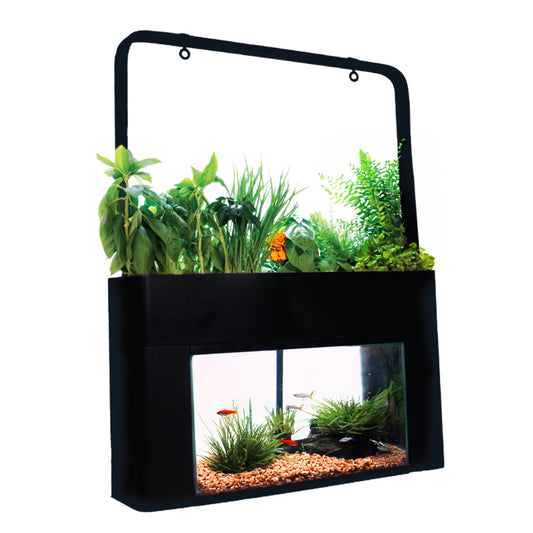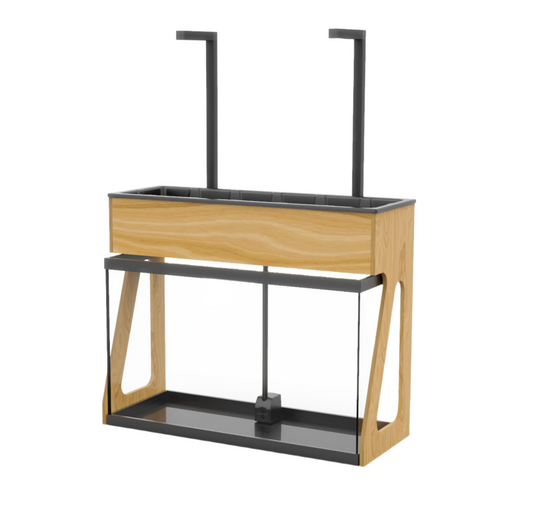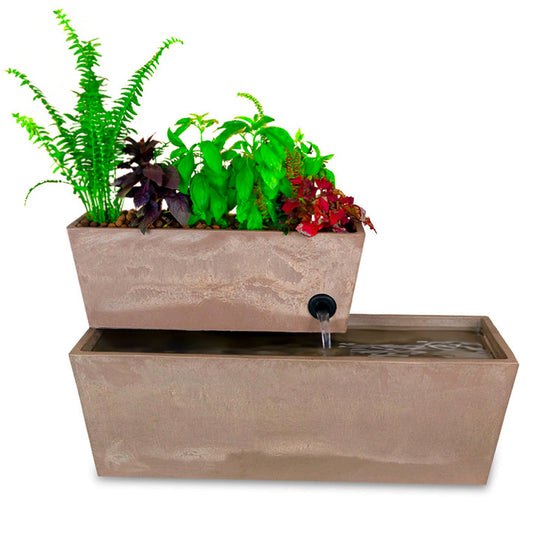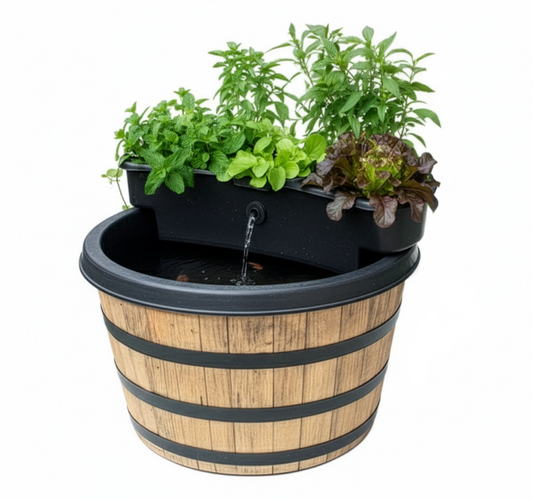Nitrate Buildup: Too Much of a Good Thing


In aquaponics, nitrate is the good guy in your system’s nutrient cycle. Fish produce ammonia in their waste, and part of your system’s biofilter will oxidize - “eat” - that ammonia to produce nitrite, but both ammonia and nitrite are deadly toxic to fish if they build up to significant concentrations in the water. Fortunately, a second population in your biofilter will eat that nitrite and produce nitrate (NO3-). Not only is nitrate generally harmless to fish at much higher concentrations than ammonia or nitrite, it’s also easier for plants to take up from the water and metabolize, removing the waste from your system and fertilizing your crops! In most aquaponic systems, growers work to provide enough nitrate for hungry plants.
Too much of a good thing can still be a problem, however, and especially in a smaller system, you can’t always be sure your plants are taking up nitrate as fast as you’re producing it. Excess nitrate buildup can lead to health problems in your fish, and if it gets too high, even your plants may start to lose their appetites.
Expert opinions vary on how much nitrate a healthy system should carry. Some growers prefer to keep nitrate levels just above zero, with only enough present to know that their plants are taking up as much as they need. Others say levels can go as high as 50 parts per million safely, which gives them a lot more leeway in terms of making sure their plants always have enough nitrogen. The general consensus, however, is that for optimum fish health nitrates in the water should average 20 ppm or less.
It’s important to test nitrates regularly! In a healthy system, ammonia and nitrite tests can be performed infrequently - it’s good to check them if you’re having fish health problems or if the system is disturbed in some way, but after the first few months of operations, testing each once per month is more than adequate. In general, you’ll see problems with ammonia or nitrite in your fish’s behavior. Nitrate, however, doesn’t always create problems immediately, and when it does, they can be subtle! Your fish may get sick more often, or they may simply fail to thrive, growing slowly and often simply looking unhealthy. (Testing nitrate regularly can also help you prevent plant malnutrition; if you consistently test zero, your plants are taking up every last bit and might still be hungry, and you may not be getting the best crops you could be!)
If your plants aren’t using it all, nitrate won’t ever go away on its own, and left untested, it can build up to scarily high levels before anything goes obviously wrong. A disease outbreak in a tank of fish with healthy water might be easily managed, but if their immune systems are suppressed by swimming in nitrates, what might have been a simple matter can kill off your entire school before you can stop it! Fortunately, if you find you’re generating too much nitrate, there are easy solutions.
- Feed less: all that nitrogen in the water - ammonia, nitrite, and nitrate are nitrogen compounds - comes from the food you’re feeding. Don’t starve your fish, but take a look at your feeding routine. It’s easy to gradually increase feeding a little at a time if you’re doing it by eye. Measuring out food can help prevent this drift.
- Change your water: nobody likes to hear that it’s water change time. It can be a big hassle moving all that water around, if your system doesn’t have a built-in water exchange mechanism, and most small systems don’t. However, if your nitrate levels are dangerously high, you may need to remove some to protect your fish while your plants get caught up, and there’s no way to take out the nitrates except by taking out the water they’re in! Fortunately, if you can adjust your feeding as well, you may not have to keep doing water changes forever.
Once you’ve got your nitrates down under control, you can fine-tune many things about your system to bring inputs and outputs into balance. Reducing feeding can help bring down inputs; adding plants, increasing lighting, or supplementing your plants in other ways (adding non-nitrogen fertilizers or important elements like iron) can increase growth and speed up nitrate uptake.
You may have to do a little work to get things balanced just right, but an aquaponic system in equilibrium is a hassle-free thing of beauty! Test your nitrates and adjust accordingly and before long you’ll be enjoying happy, healthy fish and lush crops with hardly any effort at all.

